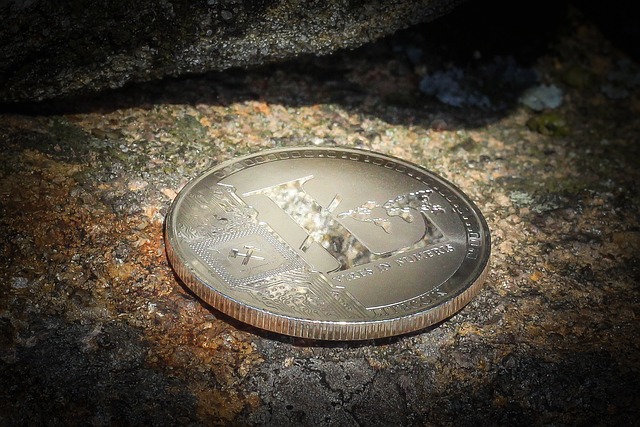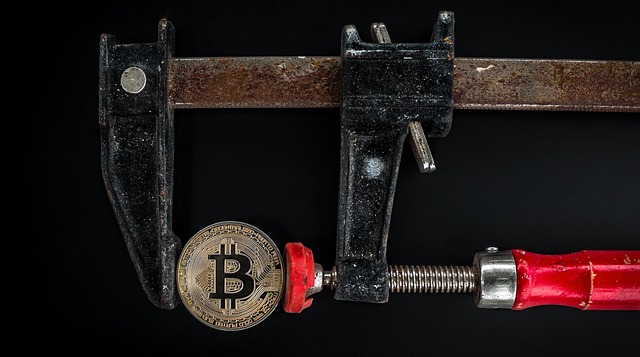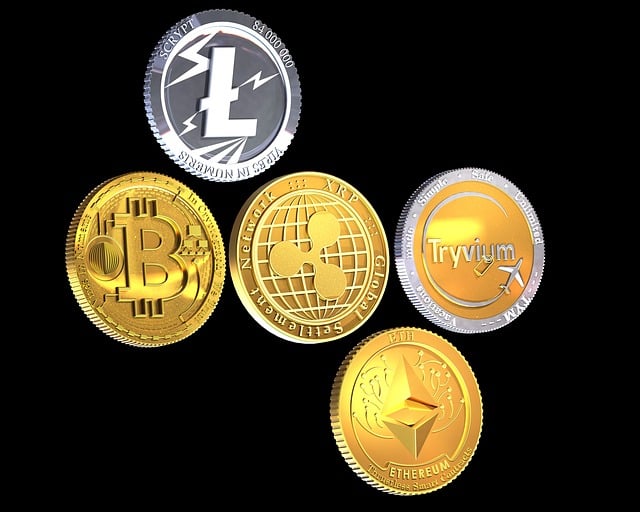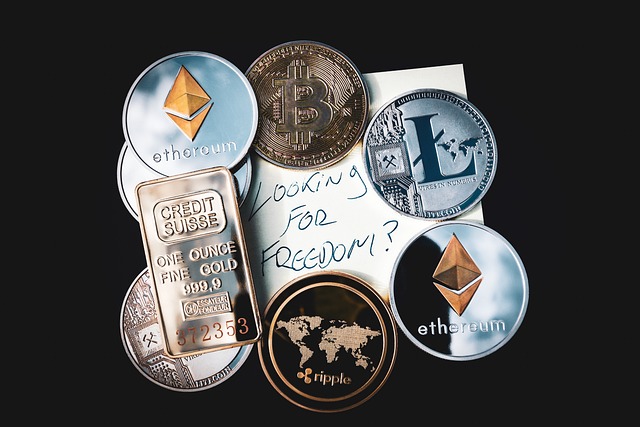Litecoin (LTC), leveraging blockchain technology, disrupts traditional cross-border remittances with faster processing times and lower transaction fees. Its decentralized nature and Lightning Network enable near-instant peer-to-peer transfers, particularly beneficial for unbanked or underbanked populations in developing countries. LTC's real-time confirmations and substantial fee reductions make it a game-changer for international fund transfers, as seen in charitable initiatives supporting education in Africa. However, regulatory hurdles, including anti-money laundering (AML) and know-your-customer (KYC) regulations, pose challenges to its widespread adoption. Clear guidelines and cooperation between regulators and the crypto community are crucial for LTC to fully revolutionize global remittances.
Litecoin, a peer-to-peer cryptocurrency, has emerged as a game-changer in global cross-border remittances. This article explores how Litecoin’s unique features—lower fees and quicker settlement times—are transforming traditional money transfer services. We delve into the challenges of existing remittance systems and Litecoin’s role as a faster, more cost-effective alternative. Through real-world examples and regulatory insights, we examine Litecoin’s impact on the global remittance market and its potential future trajectory.
- Understanding Cross-Border Remittances: Challenges and Existing Solutions
- Litecoin's Emergence as a Faster, Cheaper Alternative
- How Litecoin Facilitates Faster Settlement Times
- Lowering Transaction Fees with Litecoin for Remittances
- Real-World Examples of Litecoin's Impact on Remittance Services
- Regulatory Considerations and Adoption Barriers for Litecoin Remittances
- The Future of Litecoin in the Global Remittance Market
Understanding Cross-Border Remittances: Challenges and Existing Solutions

Cross-border remittances play a vital role in facilitating financial transactions between individuals living in different countries, often supporting families and communities back home. However, traditional remittance services face several challenges. High fees, slow processing times, and limited access to banking services in receiving countries are some of the primary obstacles. These issues particularly affect unbanked or underbanked populations, hindering their ability to send and receive money securely and efficiently.
Existing solutions include various digital payment platforms and cryptocurrencies that aim to streamline these processes. Litecoin, for instance, has emerged as a promising alternative due to its lower transaction fees and faster settlement times compared to traditional remittance channels. By leveraging blockchain technology, litecoin enables borderless, secure, and cost-effective money transfers, addressing many of the challenges faced in traditional cross-border remittances.
Litecoin's Emergence as a Faster, Cheaper Alternative

Litecoin, born out of the success of Bitcoin, emerged as a digital currency with a distinct purpose: to facilitate faster and cheaper transactions. Unlike its predecessor, Litecoin was designed to process payments more rapidly, making it an ideal candidate for cross-border remittances. Its decentralized nature allows for peer-to-peer transfers without the need for intermediaries, reducing fees and settlement times significantly.
This alternative cryptocurrency has gained traction due to its enhanced speed and cost-effectiveness. Lightning Network, a layer-2 solution built on Litecoin, enables near-instant transactions with minimal fees, offering a compelling alternative to traditional money transfer services. This has made Litecoin a game-changer in the remittance space, especially for individuals sending funds internationally.
How Litecoin Facilitates Faster Settlement Times

Litecoin’s built-in features make it an ideal choice for facilitating cross-border remittances. One of its key advantages is the speed at which transactions are processed and settled. Unlike traditional banking systems that can take several days to transfer funds internationally, Litecoin offers significantly quicker settlement times. This is largely due to its block time, which is approximately 2.5 minutes, compared to Bitcoin’s 10-minute average.
The faster block generation allows for immediate confirmation of transactions, reducing the overall time lag in remittance processing. This real-time nature ensures that recipients can access their funds swiftly, making Litecoin a compelling option for individuals and businesses looking to send money across borders efficiently.
Lowering Transaction Fees with Litecoin for Remittances

Litecoin, often hailed as a “digital silver” to Bitcoin’s “digital gold,” plays a significant role in enhancing cross-border remittances. One of its key advantages is the substantial reduction in transaction fees compared to traditional money transfer services. This is particularly beneficial for low-value transfers, where Litecoin’s lower fee structure enables more cost-effective transactions. With faster block times, Litecoin ensures that remittances are settled quicker, providing a much-needed speed boost in international money transfers.
The efficiency of Litecoin’s blockchain technology allows for faster confirmation times, reducing the wait period for recipients to access their funds. This agility is crucial in the fast-paced world of global trade and migration, where immediate access to funds can have significant impacts on individuals’ lives, especially those relying on remittances as a primary source of income or support.
Real-World Examples of Litecoin's Impact on Remittance Services

Litecoin’s impact on cross-border remittance services is evident in several real-world examples. For instance, in regions with limited access to traditional banking infrastructure, Litecoin has facilitated faster and cheaper money transfers. Nonprofit organizations have leveraged Litecoin to send funds directly to beneficiaries in developing countries, bypassing the high fees and lengthy processing times associated with conventional financial institutions.
One such case involves a charity that uses Litecoin to support education initiatives in Africa. By utilizing Litecoin’s peer-to-peer network, they can transfer funds within minutes, ensuring that resources reach their intended destinations promptly. This efficiency has allowed them to expand their programs and positively impact more lives. Similar stories exist across the globe, showcasing how Litecoin is revolutionizing remittance services by offering a faster, more cost-effective alternative.
Regulatory Considerations and Adoption Barriers for Litecoin Remittances

The integration of Litecoin (LTC) into cross-border remittances presents both opportunities and challenges, particularly in navigating regulatory landscapes. While Litecoin’s decentralized nature offers faster transactions and lower fees compared to traditional money transfer services, it also raises concerns among regulators. The lack of centralized oversight makes it harder for authorities to monitor and prevent illicit financial activities, money laundering, and terrorist financing—issues that are paramount in the remittance sector. This has led to varying degrees of adoption and regulatory responses worldwide, with some countries embracing LTC’s potential while others maintaining a cautious approach or even prohibiting its use in remittances.
Adoption barriers include strict anti-money laundering (AML) and know-your-customer (KYC) regulations that traditional financial institutions have in place, which are often missing in the cryptocurrency sphere. For Litecoin to become a viable option for cross-border remittances on a larger scale, regulatory clarity and cooperation are essential. This involves establishing guidelines for cryptocurrency compliance while ensuring consumer protection and security. Until such frameworks are developed and universally accepted, the full potential of Litecoin in revolutionizing global remittances may remain unrealized.
The Future of Litecoin in the Global Remittance Market

Litecoin’s potential in the global remittance market is a promising evolution in cross-border money transfers. Its rapid transaction speeds and lower fees compared to traditional banking systems make it an attractive option for sending money internationally. As the demand for faster, cheaper alternatives grows, Litecoin could revolutionize how folks transfer funds globally.
The future looks bright for Litecoin in this sector, especially with its increasing adoption and growing community support. As more businesses and individuals recognize its benefits, Litecoin’s role in facilitating cross-border remittances may become even more significant, potentially displacing some traditional financial intermediaries.
Litecoin has emerged as a game-changer in the cross-border remittance space, offering significantly lower fees and faster settlement times compared to traditional money transfer services. Its peer-to-peer nature and robust technology make it an attractive alternative for sending money globally. As regulatory frameworks evolve, Litecoin’s potential to revolutionize the remittance market is set to grow, providing a more efficient and accessible means of transferring funds internationally.







Leave a Reply